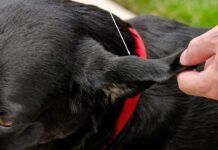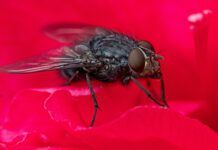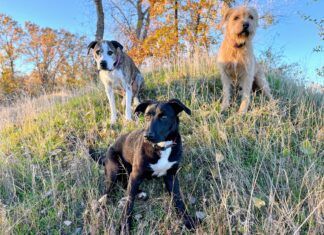The interview in the December issue (Reinforcing Our Beliefs) was fascinating. This year’s subscription to WDJ was worth that one article alone. SeaWorld trainer Chuck Tompkins’ description of the whale’s reaction to negative punishment was hair-raising.
I had read elsewhere that negative punishment can produce the same neuro-endocrine physiological response as positive punishment, but this graphic description of the type of physical reaction that can occur really got my attention.
I think that many positive trainers believe negative punishment is relatively innocuous and use it freely. But I am convinced that we should strive to eliminate all forms of punishment from our training. Because of the society that we live in, which emphasizes coercion as the primary method to control behavior, we are too eager to embrace negative punishment as a valid technique in “positive training.”
I recently attended a “chicken camp” seminar taught by Bob Bailey (a famed behaviorist). Never did he suggest using negative punishment to train the chickens. I think that was because, not only was it unnecessary, but the chicken wouldn’t care whether you ignored it or not.
-Joseph A. Houle, M.D.
Alpena, MI
———-
I just finished reading the fascinating article on marine mammal training. If I understood it correctly, the trainers long ago decided that using negative punishment was detrimental to their relationship with the animals, and therefore eliminated this technique from their training programs. But isn’t negative punishment what we’re doing when we give time-outs, or withdraw our attention when a dog does something we want to discourage, such as mouthing or jumping up on us? What lesson, by extension, should we as dog owners learn from this article?
-Caroline Wolstenholme
Tucson, AZ
Training Editor Pat Miller responds:
The marine mammals interviewed in the article did say they no longer use negative punishment (taking away something good when the animal does something “wrong”). And, yes, “positive” dog trainers (including myself) do frequently use or recommend the technique.
I think the lesson we learn is that although behavior is behavior regardless of species, circumstances are quite different depending on the species. For marine mammals, it appears that negative punishment is very aversive, and not conducive to a positive training environment. However, marine mammals live in a tank and their trainers interact with them only at specific times for specific purposes.
We live with our dogs 24/7 (or close to it), and I suspect that withdrawal of attention is far less aversive for our dogs than for captive whales. Dogs know there’s lots more where that came from. Maybe it has to do with the degree of the withdrawal of the good stuff. I don’t see negative punishment having an aversive effect on my dogs; it just makes them stop and think.
That said, I think the other lesson is to remember that it matters not what we think is aversive or rewarding, it matters what our subject (dog, whale, cat, horse, or whatever) thinks. If I were working with a dog who found negative punishment very aversive, I would stop using it and find another way.
Interviewer Nancy Kerns adds:
The marine mammal trainers did add in extended conversation that they suggest that dog trainers consider whether negative punishment might be an aggravating technique to some aggressive dogs. Most killer whales, and some aggressive dogs, they explained, take it “personally” when the opportunities to earn food, attention, or other comforts are suddenly withdrawn in response to their “bad” behavior. Not all species, or all individuals of certain species, respond this way.
———-
Would you please do an article on what constitutes punishment? From the interview with Chuck Tompkins and Thad Lacinak, I get the impression that a sharp “No” or “Hey” could harm the relationship. Are all corrections punishment?
Also, could you suggest positive training books that do not use the clicker training method? I am going to check out Click for Joy, but the trainers here do not use clicker training. And do you know of any quality books for training service dogs?
-Alan Mortensen, Associate Dean
Lake Land College, Mattoon, IL
Nancy Kerns responds:
We’ve done a lot of articles that define and describe punishment. Check out:
• “Conversations On Compulsion,” 1/02
• “Just Rewards,” 3/02
• “Secrets of a Happy Relationship,” 8/02
• “The Crossover Challenge,” 3/03
• “Be a Benevolent Leader,” 8/03
Pat Miller responds:
Regarding your question about books that feature positive training methods that don’t use clickers: You can certainly use much of what is presented in clicker books; just omit the clicker.
In my opinion, lure-and-reward training (which is what we call positive training sans clicker) is less effective, but can certainly get the job done. If you could talk your college trainers into using a verbal reward marker (such as “Yes!”), that would be good. Also, Karen Pryor is now offering a new clicker that is easy for people with disabilities to use; you can get it from her business at www.clickertraining.com or (800) 47-CLICK.
And yes, there are some good positive books that dont use the clicker. Try:
• Beginning Family Dog Training, by Patricia McConnell
• Doctor Dunbar’s Good Little Dog Book, by Dr. Ian Dunbar
• Your Outta Control Puppy, by Teoti Anderson
• The Dog Whisperer, by Paul Owen
All are available from DogWise at dogwise.com or (800) 776-2665. I am not personally familiar with service dog books, but you could check out that category at the DogWise Web site.
———-
A letter from our publisher
I’m sure I join a lot of readers to express my condolences upon the loss of Rupert, your faithful companion for lo these many years. But, as publisher of The Whole Dog Journal, I want to say personally and sincerely that Rupert lived an admirable life, exemplifying a lot of the qualities that we wish all our dogs possessed, indeed qualities that I wish were more prevalent throughout humankind. You’ll think I’m getting a little sappy here. But Rupert was The Whole Dog Journal’s “signature” from Issue One. He was cooperative. He was patient. He was intuitive. He was companionable. He represented in his quietly noble way the needs of all the dogs The Whole Dog Journal strives to benefit. And of course he was photogenic. We have countless shots of Rupert simply being Rupert and representing in his uncanny way precisely what WDJ wished to convey. He was a dog who knew how to seize the moment . . . and capture your heart.
I’m sure Rupert dished up his share of travail, made his messes, skulked, even sulked every dog has his day. But for me, Rupert was that wonderful Everydog who came to embody the heart and being of The Whole Dog Journal. Rupert, boy, you’ll be missed . . .
-Tim Cole
Sarasota, FL
———-
Correction
The Whole Dog Journal recently mailed subscription promotion material that contained an error in fact relating to a fat ingredient featured in Abady Formula for Maintenance and Stress dog food.
An independent copywriter and our marketing department, which prepared the material, cast the dog foods fat source in a negative light without a full understanding of the value of fat in the diet of a dog, or how dogs process fat metabolically. Robert Abady, of the Robert Abady Dog Food Company Ltd., points out: “Fat is the natural source of calories and nutrition for the dog. Pork fat (or lard) is the most nutritious of the land-based animal fats and the biological equivalent of fish fat. It is the richest in the long-chain Omega 6 and Omega 3 fatty acids and the most expensive. The statements that indicate or suggest that lard is harmful to dogs are simply false.”
We stopped the production of this issue in order to insert this statement for the record that the comment made by our copywriter was made with no basis in scientific fact. The Whole Dog Journal regrets the error.





